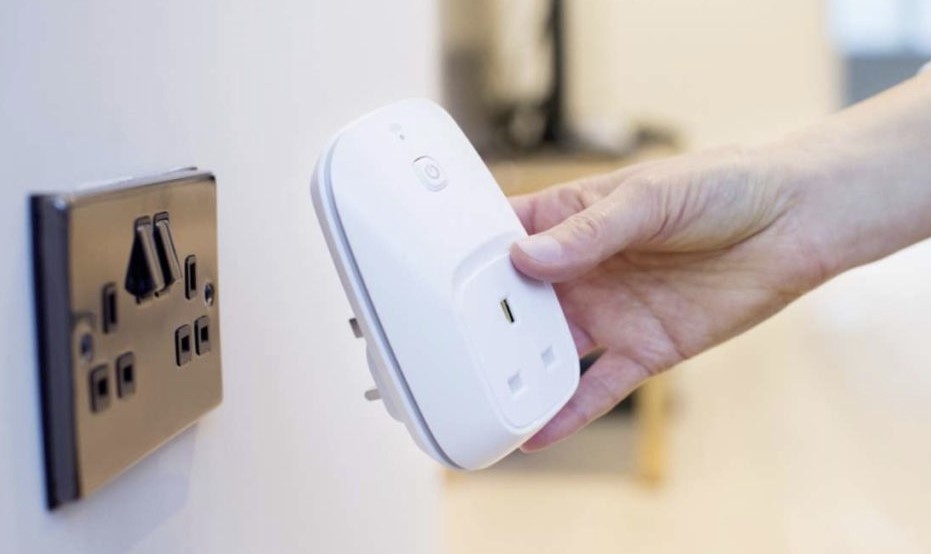Pollen, dust, dander, and other irritants can reduce the air quality inside your home. One way to eliminate indoor air pollutants is by using a plug-in air purifier.
Plug-in air purifiers come in different types and sizes. These include ultraviolet, HEPA, activated carbon, ionic, electronic, central air cleaners, and air-to-air exchangers. So, what exactly is a plug-in air purifier?

A plug-in air purifier is a small portable device that purifies the air when you plug it into a wall outlet or socket.
It does not have many mechanical parts, which makes it ideal for use in small spaces like pet areas, laundry rooms, cabinets, and the inside of your car. It is also ideal when traveling.
Contents
How plug-in air purifiers work
Plug-in air purifiers use different mechanisms, such as carbon filters, ionizers, and UV-C light, among others, to kill germs, refresh the air and kill mold.
They are also functional when it comes to eliminating kitchen odors, smoke, and pet smells.
Each plug-in air purifier works differently depending on the type of filter or air purification mechanism employed. Here’s a detailed explanation of how each type works.
How pluggable air purifiers with UV-C light work
Buying a wall plug-in air purifier with UV-C light will use short-wave ultraviolet light to inactivate airborne microorganisms and pathogens.
These can include viruses, bacteria, and mold. When the air goes into the device, it passes through the UV lamps, which disinfect it through a process called germicidal irradiation.
However, the process requires high levels of UV light and long exposure times. That is because mold and bacterial spores are resistant to UV radiation. A high dosage of UV light is necessary for this to work effectively.
But most pluggable air purifiers with UV-C light have low levels of ultraviolet light.
That means they may not be the best for getting rid of pollutants in your home. However, they are still effective when traveling.
If you are interested in an effective plug-in UV-C air purifier, go for the GermGuardian GG1100W Elite.
How pluggable ionizer air purifiers work
Pluggable ionizer air purifiers emit negatively charged ions that attract positively charged particles like allergens and dust.
They use a high voltage to give an electric charge to particles that move through the unit.
The particles then bind to the charges and become too heavy to remain airborne. As a result, they drop to the floor, where you are less likely to inhale them.
But ionizer plug-in air purifiers may not be the best to use. That is because they do not remove gaseous pollutants, odors, and VOCs from the air.
Many of them only eliminate particulates such as dust, dirt, smoke, soot, fumes, and other combustion by-products.
Although they can get rid of particulate pollutants, they may not be effective altogether. If the unit does not have a collector plate, the clumped particles will stick to upholstery, curtains, and carpets or fall on the floor.
You will then have to clean it up, with a high proportion of the particles such as dust, mold spores, and dust getting kicked back into the air through air currents.
If you are interested in a plug-in air ionizer that removes particles from the air, go for the Clarifion Negative Ion generator.
How do plug-in air purifiers compare to mini air purifiers
Mini air purifiers with activated carbon filters are the best to use. The devices work by removing gasses and odors from indoor air. When combined with a HEPA filter, they can get rid of particles like mold, dust, or pollen from the air.
These mini air purifiers work by forcing air through the filtration system. As the air passes through the activated carbon, it undergoes adsorption, which removes pollutants.
If you’ve read through several plug-in air purifier reviews, you will notice that the only disadvantage is that they don’t have the most effective filters.
They will get rid of some gaseous and particulate pollutants from the air in your home but leave around the rest.
Mini-air purifiers are, therefore, the better option. Check out The Three Musketeers III M if you need an effective mini-air purifier that you can place on a desktop, car, or bedside table.
What are the uses of mini air purifiers with carbon filters?
You can use a pluggable air purifier with a carbon filter to:
- Trap and neutralize indoor odors.
- Freshen the air in your home.
- Eliminate VOCs from the air.
- Remove fine particles like mold, dust, and pollen.
An advantage of using the units is you can plug them in any area regardless of the temperature level of degree or humidity.
Conclusion
If you are looking for the best plug-in air purifier, consider using a unit that combines a True HEPA filter and an activated carbon filter.
It will work to get rid of gaseous and particulate pollutants from your home. You can use it in small spaces like pet areas, laundry rooms, cabinets, and inside your car.